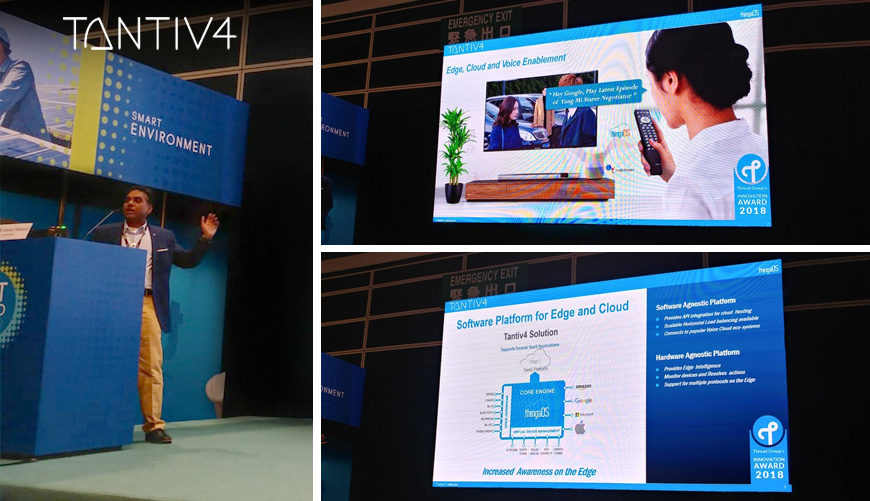Kishore Moturi recently made an appearance at the International ICT Expo that was held at the Hong Kong Convention and Exhibition Centre. Mr. Moturi discussed Tantiv4’s IoT vision in detail and explained how the company plans to innovate in one of the hottest IT sectors of the world.

Current State of the IoT
At present, the IoT sector is marred by three main issues.
- Smart homes are insecure.
- There are several issues with the implementation of existing wireless technologies.
- Which IoT devices and platform to choose from?
Current State of Standardization
The IoT space is almost equally shared by all the major tech giants. Amazon, Apple, and Google have setup up quite a few successful IoT ecosystems. This begs the question: what about interoperability? How are all the IoT products and services of these giants supposed to communicate with each other?
On a similar note, there is a clear fragmentation of edge connectivity. There is a severe need of innovation and out-of-the-box thinking from industry consortiums. Technologies like Wi-Fi, Z-Wave, and Bluetooth have to be improved to tackle the IoT challenges.
Likewise, Artificial Intelligence (AI) and Machine Learning (ML) and their applications like deep learning, artificial neural networks, etc are complex; each company has its own implementation of AI and its use in solving an identified issue.
In order to plug the non-uniformity dilemma, consortiums have to enforce standardization in the industry.

Current Cloud Approaches
Internet of things is incomplete without cloud computing. Cloud computing mainly revolves around IaaS (infrastructure as a service), PaaS (platform as a service), and SaaS (software as a service). These layers outsource the hardware layer, OS/middleware layer, and the application layer to the cloud providers. Generally, the cloud is expected to help with data storage. The PaaS providers are supposed to offer a predetermined implementation, leaving no room for any customization.
There is not a single proper SaaS-based IoT solution. Service providers and device makers mainly set their eyes on the Smart Home Solutions. This space is marred due to lack of domain experience and knowledge. Both the customers and consumers go around it using an ROI-based perspective.
Resolving the ROI Dilemma
Tantiv4 believes that it is necessary for the solution providers to research SaaS thoroughly and gain a strong understanding of its working. Industry verticals must pick and target a specific domain of SaaS and master it, just like Tantiv4. The responsibility of original equipment manufacturer (OEM) is achieving a decrease in go-to- market time and reduction in the execution risk.
All the major hubs must offer support to the known connectivity protocols like Bluetooth, Wi-Fi, and Z-wave. With this step, customers can get a wide array of choices. Similarly, an IoT solution has to offer compatibility with all the products and services of the industry leaders. For instance, if an IoT solution is introduced, then it should have support for Google’s services like Google Drive and Gmail. This can help consumers use their favorite services from the start.
Tantiv4 is investing heavily in a wide range of application domain in SaaS IoT cloud. And plan to introduce a multiple product & industry specific SaaS IoT Cloud solutions.